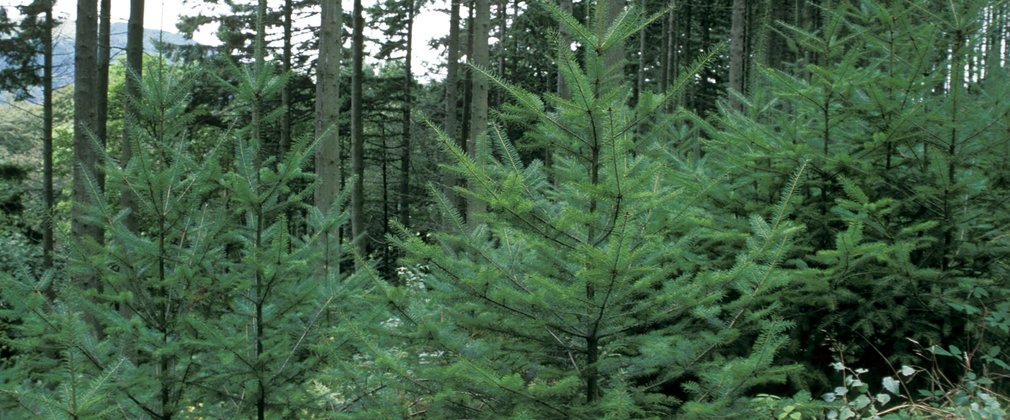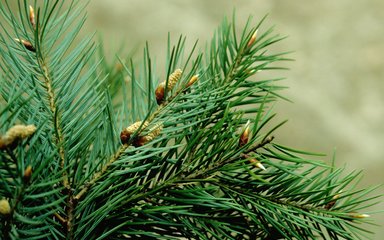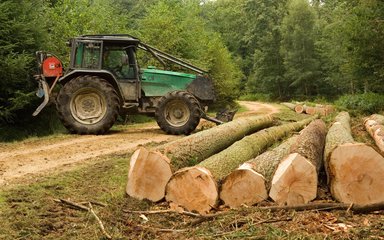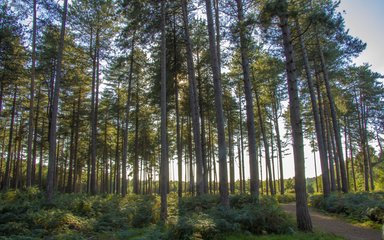
A tall and majestic tree, Douglas fir is named after botanist David Douglas who sent the first seeds to Britain from North America in 1827. Find out more about this tree species, from its appearance to the uses of its timber.
Douglas fir facts and figures
- the tallest tree in England is a Douglas fir standing over 60 metres tall, found at Nutcombe Bottom.
- its natural range is western North America, from British Columbia to California.
- its bark is non-flammable and offers great protection against forest fires.
- its botanical name, Pseudotsuga menziesii, commemorates Scottish botanist Archibald Menzies who discovered the tree in 1791.

Douglas fir identification tips
Heading out into the forest? Here are the top things to look out for to help you spot a Douglas fir:
- bark: thick and corky, purplish brown, with deep gaps running up the trunk.
- needles: dark green, short, flat, soft and flexible with paler stripes underneath.
- cones: oval-shaped cones hang from the ends of branches, with a three-point feathery bract on every scale.
How Douglas fir is used
One of the strongest and finest softwoods, Douglas fir timber is excellent quality and can compete with hardwoods such as the finest quality oak. A major timber species in its native North America, it is often imported as 'Oregon pine'.
Originally grown in this country for ornamental purposes, it is now a valuable tree for structural timber in buildings and construction work, and produces high quality plywood and veneers. It is also used for joinery, furniture and panelling and suitable for wood pulp for making paper and chipboard.

Douglas fir and future forestry
Douglas fir is widely used in the forestry sector and will continue to be valuable in a warming climate due to its moderate fire resistance and tolerance of summer droughts.
As long-lived trees, they're also important homes for wildlife, benefitting red squirrels, pine martens, finches and birds of prey.


